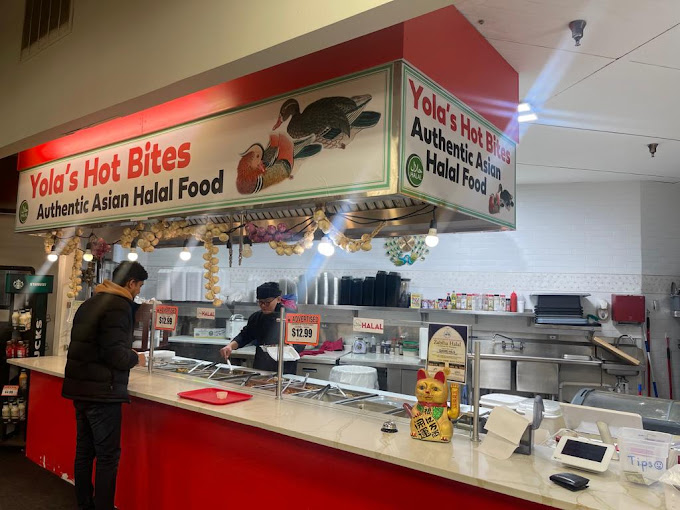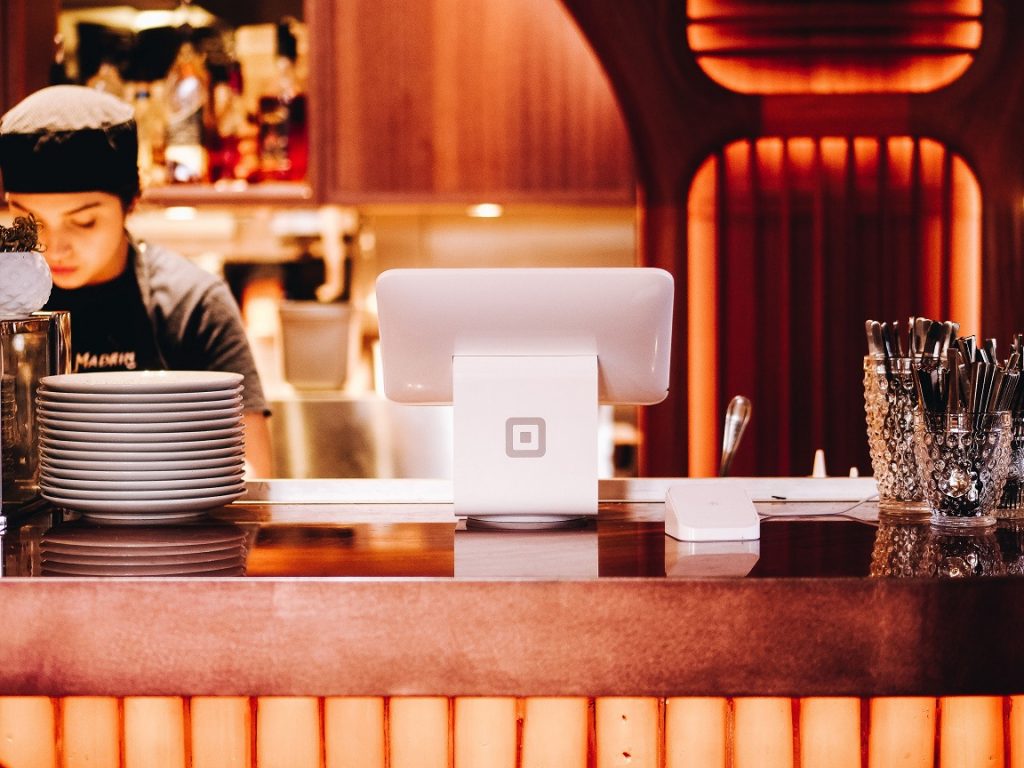Chinese Food Islamabad: Delight In Genuine Chinese Cuisine at its Best
Chinese Food Islamabad: Delight In Genuine Chinese Cuisine at its Best
Blog Article
Savor Authentic Eastern Food With a Pan-Asian Spin for a Cooking Experience
Starting a culinary trip with genuine Eastern cuisine, boosted with a Pan-Asian spin, supplies a special possibility to check out the rich tapestry of flavors that specify the region's diverse culinary practices. This experience welcomes you to enjoy the beautiful equilibrium of tastes-- sweet, salty, spicy, and sour-- balanced by aromatic herbs and spices. Imagine the ingenious combination of Thai curry and ramen or the unexpected joy of sushi burritos. As you contemplate these attracting recipes, take into consideration the social narratives and historic impacts that shape them, each bite offering a tale waiting to be discovered.

Exploring Pan-Asian Flavors
In the realm of worldwide gastronomy, Pan-Asian cuisine sticks out for its amazing variety and the unified interaction of tastes from different Asian societies. This culinary strategy celebrates the rich practices and distinct components located across the continent, creating a tapestry of preferences that is both satisfying and appealing. Key to Pan-Asian cuisine is its ability to balance contrasting tastes-- sweet, salted, spicy, and sour-- while highlighting the quality and top quality of each active ingredient.
From the umami-rich soy sauce of Japan to the fiery chili peppers of Thailand, Pan-Asian cuisine uses a comprehensive scheme of flavors. These elements are often combined in creative ways, boosting recipes with layers of intricacy. As an example, the usage of great smelling herbs such as lemongrass and cilantro, typical in Vietnamese and Thai cuisine, includes a refreshing illumination to dishes, while the incorporation of coconut milk delivers a velvety, rich structure.
The focus on fresh produce and aromatic flavors ensures that each meal is not only a banquet for the preference buds but likewise for the senses. Pan-Asian food welcomes diners to embark on a culinary trip, checking out the vast and differed landscapes of Eastern gastronomy with every bite.
Fusion Recipes to Try
While Pan-Asian food is commemorated for its traditional flavors, the modern-day culinary landscape is progressively accepting fusion recipes that blend these timeless aspects with impacts from various other regions. This ingenious strategy not only honors the abundant heritage of Eastern culinary arts however also presents novel taste experiences that interest contemporary tastes buds.
A prime instance of such a fusion recipe is the Korean-Mexican taco, where seasoned bulgogi beef is covered in a warm tortilla, covered with kimchi and a zesty gochujang-infused salsa. This mix weds the bold, savory flavors of Korea with the lively, fresh aspects of Mexican cuisine. In a similar way, sushi burritos have actually obtained popularity, amalgamating the delicate creativity of Japanese sushi with the hearty, hand-held benefit of a burrito, frequently including combination components like tempura shrimp and avocado with a drizzle of wasabi mayo.
One more notable meal is Thai curry ramen, which instills the luscious, aromatic flavors of Thai curry into the comforting broth of conventional Japanese ramen, developing a harmonious blend that tantalizes the senses. These combination recipes expand beyond simple uniqueness; they stand for a cooking dialogue between cultures, motivating expedition and development in the world of Pan-Asian cuisine.
Crucial Components and Seasonings
To genuinely appreciate Pan-Asian food, one need to comprehend the necessary ingredients and seasonings that develop its structure. This diverse culinary style attracts from an abundant tapestry of Asian practices, utilizing an unified mix of mcdonalds coupons textures and tastes. Key ingredients consist of soy sauce, fish sauce, and oyster sauce, which present a mouthwatering umami depth vital to Asian meals. Complementary to these are rice vinegar and mirin, offering a fragile level of acidity and sweet taste.
Aromatic elements are critical, with garlic, ginger, and lemongrass being ubiquitous across different Pan-Asian recipes. These components give an aromatic base that enhances the complexity of tastes. Spices such as star anise, cardamom, and cinnamon present heat and personality, resembling influences from regions like China and India.

Cooking Techniques and Tips
Mastering the art of Pan-Asian cuisine requires experience with its distinctive cooking methods, each adding to the vivid tapestry of flavors this cooking tradition is celebrated for. Central to these approaches is the stir-fry, a rapid cooking method that preserves the dietary integrity and vivid colors of components. Utilizing a frying pan, the stir-fry method permits even warmth distribution, vital for attaining the characteristic structure and flavor equilibrium of Pan-Asian dishes.
Another basic strategy is steaming, particularly common in Chinese food. This gentle method preserves the natural flavors and nutrients of active ingredients, making it ideal for fish and shellfish and veggies. Dumplings, a beloved best mexican food near me staple, typically gain from steaming, causing soft, succulent appearances.
Barbecuing, likewise indispensable, imparts great smoky midsts to recipes such as Oriental bulgogi or Japanese yakitori (Instagrammable restaurants Islamabad). This strategy commonly involves marinating active ingredients, allowing tastes to pass through deeply before cooking over an open flame or hot plate
Lastly, grasping the art of stabilizing flavors-- wonderful, sour, salty, bitter, and umami-- is crucial. Effectively layering these elements can raise a recipe from normal to phenomenal, using a complex and satisfying culinary experience that personifies the significance of Pan-Asian cuisine.
Eating Experiences Worldwide
Around the world, Pan-Asian food supplies an unrivaled dining experience, celebrated for its abundant tapestry of tastes and vibrant discussions. This cooking sensation has actually gone beyond cultural limits, catching the hearts and tastes buds of food enthusiasts worldwide. In multicultural cities like New York, London, and Sydney, Pan-Asian restaurants act as fusions where culinary customs from Thailand, Japan, China, and beyond merge, providing restaurants with an eclectic mix of meals that highlight the area's diversity.
The international appeal of Pan-Asian cuisine depends on its capacity to supply both credibility and development. Cooks skillfully marry conventional ingredients such as lemongrass, soy sauce, and miso with modern techniques, causing recipes that are both familiar and refreshingly brand-new. This blend allows restaurants to get started on a culinary journey that respects heritage while accepting modernity.
In addition, dining experiences are elevated with attentively made settings that mirror the values of Pan-Asian looks. From minimal Japanese-inspired interiors to vibrant Thai-themed spaces, each dining establishment supplies a distinct atmosphere that matches the cooking offerings. As a result, clients are not just taking in a meal however partaking in a social experience, making Pan-Asian eating an absolutely global phenomenon.
Conclusion
The expedition of Pan-Asian food uses a profound understanding of the elaborate interplay of tastes and cooking practices throughout Asia. By welcoming fusion meals such as Thai curry ramen and sushi burritos, the cooking trip not just highlights the adaptability of traditional components yet also showcases ingenious modern strategies. This gastronomic adventure, improved by cooking methods and crucial flavors, gives a special possibility to appreciate the cultural variety and culinary creativity that specify Pan-Asian food on a global range.
Getting started on a culinary trip through authentic Asian cuisine, enhanced with a Pan-Asian twist, uses a special opportunity to check out the abundant tapestry of tastes that define the area's diverse cooking traditions.In the realm of worldwide gastronomy, Pan-Asian food stands out for its remarkable diversity and the unified interplay wing places near me of flavors from numerous Oriental societies. Trick to Pan-Asian cuisine is its capability to stabilize different flavors-- sweet, salty, spicy, and sour-- while highlighting the freshness and quality of each active ingredient.

Report this page